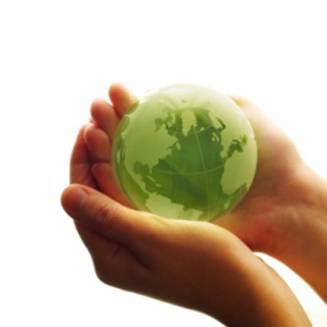Alternative measure of GDP
You need to be able to:Explain the meaning and significance of “green GDP”, a measure of GDP that accounts
for environmental destruction.
 We have seen already that GDP is a rather narrow measure of living standards.
We have seen already that GDP is a rather narrow measure of living standards.
There are alternative measures of living standards, such as the Human Development Index of the United Nations Development Programme (UNDP). This index includes development indicators, such as life expectancy and access to education, as well as GDP.
In addition, there are a number of single and composite indicators we can use as measures of development. These are explored in more detail in the Development Syllabus Section 4.2
Green GDP
National income statistics provide a rather limited measure of
living standards and wellbeing and do not take environmental concerns,
such as the depletion of natural resources, into account.
In response to this omission, the United Nations and the World Bank introduced the idea of Green GDP.
In essence, 'Green GDP' highlights both the contribution of
natural resources to economic development and the costs caused by
pollution or resources degradation (unsustainability).
By including both the use and depletion of natural resources in economic growth, this measure tells us more about the quality of the growth in terms of sustainable development.
Green GDP = GDP -Depletion of Natural Resources - Cost of Pollution
Index of Sustainable Economic Welfare (ISEW)
Another measure of development is the ISEW This provides a fuller picture of economic welfare because, like the MEW, this index adjusts the GDP figure to allow for actors ignored by GDP. These include:
- Environmental costs - pollution and other environmental costs will be negative figures and therefore reduce economic welfare.
- Defensive expenditures - increased air pollution has in many countries led to greater lung diseases, like asthma. This requires greater government spending, but cannot be said to be positive, so the ISEW adjusts for this.
- Inequality - the greater the level of inequality in an economy, the more the figure for consumption will be reduced. The ISEW adjusts for this inequality.
- Household production - family members who care for elderly relatives or dependents do not get paid for their 'work'. However, their contribution to society is significant. If they did not care, then the bill would be picked up by government or charity, and so their contribution is added back into the ISEW.
- Resource depletion - where resources are used up, this will reduce economic welfare and so, like environmental costs, the ISEW counts this as a negative, whereas GDP counts it as part of economic growth.
After these adjustments are made, we get the ISEW figure which will be a better representation of economic welfare than GDP alone.
While GDP provides a somewhat limited measure of economic growth and living standards, it does have the advantage of being fairly easily obtained and is based on three variables only - income, expenditure and output. In contrast to this, as can be seen from the HDI, MEW and ISEW, development is a multi-dimensional, complex process which can only be judged against a variety of criteria, using composite indices. This may give rise to various problems involving subjective, value judgements on behalf of the statisticians who construct the indices. For example, how should factors such as life expectancy and literacy be weighted within an index? Which factors should be included and which should be excluded? While the HDI, for example, may provide a fairly sophisticated indicator of living standards, it omits some very important components, such as environmental quality; but to construct a development index, which is all-embracing, would be a statistically awesome task!